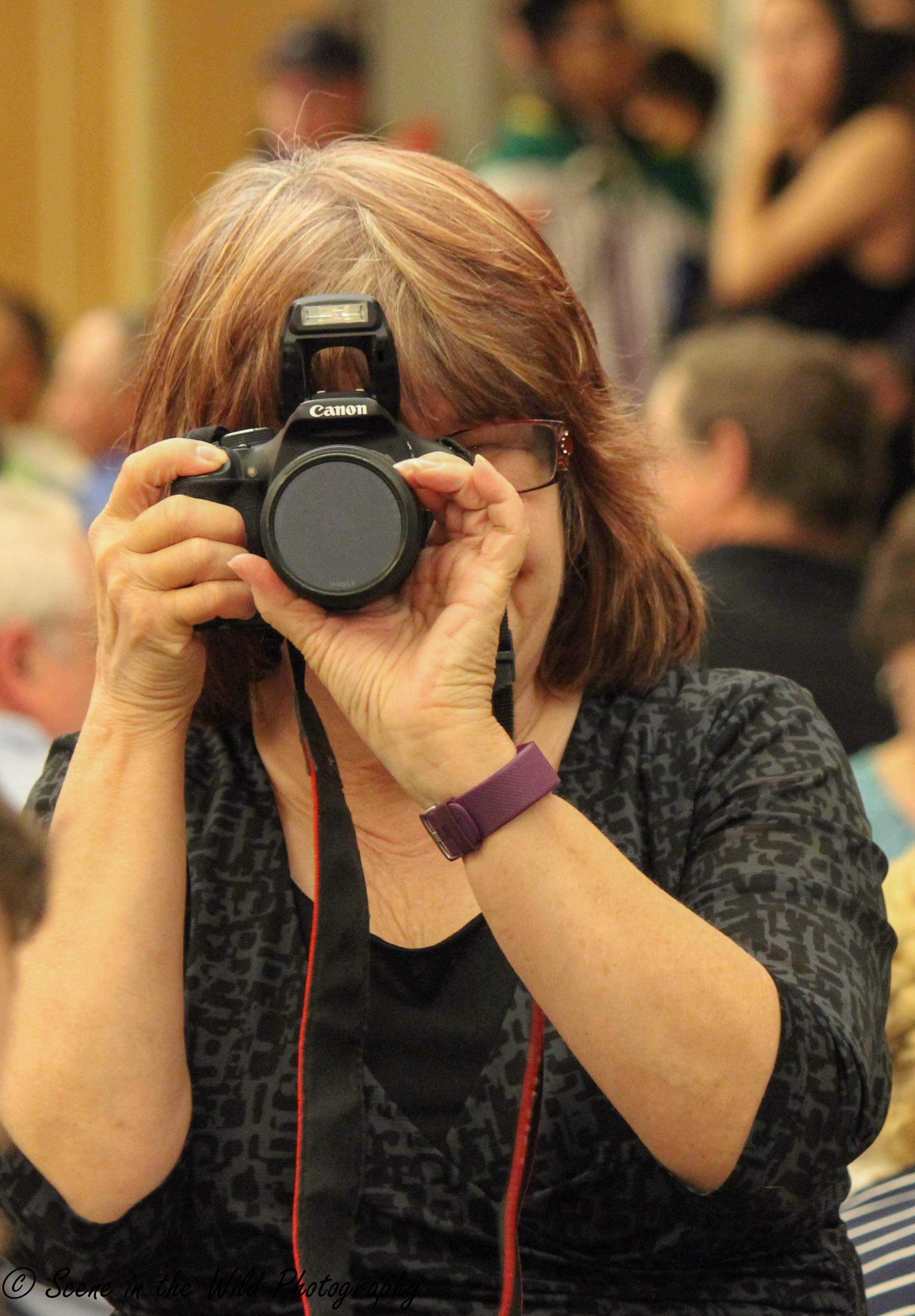A Day at Bent's Old Fort in 1865: Its Second Life
.jpg)
Description: A soldier views the set-up procedure for the Sand Creek Massacre Investigation Reenactment. Photo by Sue Keefer. See more in the Photo gallery at the bottom of this article...

A Day at Bent's Old Fort in 1865: Its Second Life
BY SUE KEEFER
Upon arriving at Bent’s Old Fort in 1865, we found it much different than our previous visits in the 1840s. There was no second story (and sadly, no billiards room), and the rooms on the west and south sides of the fort were no longer there.
The trade room was replaced by a stagecoach station and post office. There, we conversed with a man who said he was a prospector who didn’t actually prospect. He explained that he “helped” other prospectors with their claims and such but didn’t have to do the actual dirty work of finding gold. The word “shyster” did come to mind. Meanwhile, the postmaster was busily sorting mail and packages and awaiting the next stage.
We saw no Indians, a few soldiers, but quite a few folk bustling around. A group of men were cooking an assortment of meat in an adobe oven, the top of which was covered by a metal plate. Delicious smells emanated from the oven, and when the top was open, an assortment of meats was revealed, including chicken, ribs, and other cuts, presumably bison. The meat was well-basted, and we assume, so were the men, judging by the metal cups they were holding and the banter that was overheard.
One woman, who said she was making pie crust for dried apple and dried peach pies, commented that they would be feeding 80 people that evening. Other women were stoking fires, churning butter, giving tasks to children, and other domestic pursuits. A flock of chickens was resting in the shade, while a peahen and her four chicks were scurrying around, and the resident feline, who we expect was an accomplished mouser, was surveying the scene.
Soldiers and other men from various walks of life were camped a bit of a ways east of the fort. A land office was set up there, and men were staking out buffalo robes to dry, sipping coffee, cleaning tack, and other such activities. A group of three men were watching over a pot of buffalo tongue, into which they were putting onions and spices and eagerly awaiting the pleasure of tasting the meat, which they referred to as "plains trout," when it was done.
Outside in the blazing sun, a “wet plate” photographer and his assistant were busily photographing visitors and workers, producing tin types for them to take home.
We were greeted in the plaza by a gentleman who introduced himself as Senator Lafayette S. Foster, a proud Republican, who was taking a poll on what visitors thought of the “Indian problem.” Later he and two other senators, Sen. Dolittle of Wisconsin, and Rep. Ross of Illinois, would take part in an investigation into the tragedy of Sand Creek, which had occurred the previous November. Those listening to this investigation were shocked by the revelations by witnesses who testified that what had been previously called a battle against hostile Cheyenne warriors by Colonel Chivington, was in fact, a massacre by the military against mainly women, children, and elderly men.
.jpg)
A stagecoach borrowed from Fort Larned sits outside the Fort.
Such was a day in the life of Bent’s Old Fort in 1865, remarkably reenacted as “The Second Life of Bent’s Old Fort,” Sept. 8 and 9. Which brings us to the present day and the presentations that occurred on Sept. 9:
The day started with a presentation by Ranger Bill Holcombe, “Rebels in Blue: Galvanized Yankees on the Santa Fe Trail,” in which he discussed how Confederate soldiers were given the option to volunteer as Union soldiers to be sent west.
This was followed by "Bent's Old Fort: From Buffalo Robes to Stagecoaches," presented by Ranger Dr. Bob Wetterman of the U.S. Air Force Academy. Unfortunately, we weren't present for this one.
During a break in events, we spent some time talking with two reenactors, the photographer, Cody Mobley, and his assistant, Jonathan Gomez.
.jpg)
The photographer hardens the photo before giving it to the customer.
Mobley explained that his full-time job is running the McKavett State Historic Site in Texas. He had hired a wet plate photographer for an upcoming event several years ago, but that person’s van burned in a fire. Mobley bought a lens off eBay, built the rest of the needed equipment, taught himself the procedures, and began producing tin types.
Gomez said he was a teamster who had been “hired” as the photographers’ assistant for this event. Both reenactors are from Texas, and had been to the same events, but had never worked together in this capacity. Gomez was excited to be able to work with Mobley this time.
If you wanted Mobley to take your photograph, he would ask if you would prefer to be in a three-sided shelter or out in the open, with the fort as a backdrop. He’d then “block in” the photo by looking through the lens and making sure you are within the scope of the lens. Then he steps away, taking a tin plate, and sticking his head into a portable “darkroom,” pours a collodion solution onto the plate, then fixes the collodion with a silver nitrate bath. (This is why it is called “wet plate” photography. Back in the day, he could have used a glass plate, but glass was easily breakable, and tin was cheaper than glass).
After the bath, he brings the covered plate to the camera, puts it into a film holder and then into the camera. During this process he is covered with a “hood” of material to keep the plate in the dark. He then steps out into the light and tells you, “You can blink and breathe, but don’t move side-to-side,” and says “hold,” removes the lens cap for a couple of seconds using his hat as a lens hood. The amount of time varies from a half of a second in the sun to two to three seconds in the shelter, and also varies if it's sunny or cloudy. He then puts the lens back on the camera. “Relax!,” he says. You have just been photographed!
Now the magic begins! He uses ferrous sulfite to develop the negative, (you can watch the image appear), then “fixes” it with potassium cyanide to create the positive photo, which you can also watch. The photo will come out laterally reversed (your left is right and vice versa), which is how it looked to him in the camera, along with the image being upside-down. Then your photo will go into a water bath for about 15 minutes. (Note: potassium cyanide can only be obtained for educational purposes, and since he works at an historic site, he is able to get it).
But you still must wait for the finished product. He’ll let your photo dry on a rack, then he will pour an alcohol and lavender solution over the photo (called varnishing), pour off the excess, and pass the photo over a flame. (If straight alcohol was used, the photo would catch on fire!). He explains that this process hardens the photo and makes it archival, so it will last a long time. Then he dries the photo again before he hands it to you.
Mobley said the “wet plate” process requires quite a bit of water. The water needs to be distilled, or the minerals in the water could react with the minerals in the chemicals used for developing. Most photographers carried portable stills along with them so they could boil the water to distill it, he explained.
During the day, Mobley changed his chemicals and water several times, as they can get exhausted with use. Between changing chemicals, running back and forth between the camera and his darkroom, and moving the camera to different locations, all of this in the hot sun, he also must have been exhausted, especially since he had done the same thing the previous day, and planned to be there again until noon the next day.
.jpg)
A laborer walks through the entrance to the plaza.
Following the break, the investigation into the Sand Creek Massacre (mentioned above) took place in the plaza, with the reenactors portraying the two senators and representative, soldiers who witnessed the attack, an Indian agent who was at the attack, and an interpreter for the Cheyenne. Ranger Koch, who also portrayed a soldier calling the witnesses, explained that actual transcripts were used from the investigation, although they had been edited because of “young ears” in the audience. The audience was transfixed, as well as horrified, by the accounts.
Ranger Jake Koch then presented, “Bent’s Old Fort: From Buffalo Robes to Stagecoaches.” Koch described how Bent’s Old Fort became a stagecoach stop in 1860 due to the gold rush. 100,000 people came to Colorado in 1859 to find gold. At that time, Bent’s Old Fort still had four walls, but lacked the rooms on the west side as well as the upper story. It became both a “home station,” where there were extra horses and supplies available, as well as a “swing station,” from which stagecoaches could go to either Denver City or Santa Fe. The fort also became a Post Office during this time, which by law, required a military presence. Carrying mail brought in more money to the stage lines than passengers did. The fort would run in this manner until 1875, when the railroad came through, negating the need for stagecoaches.
The last event of the day was a presentation by Teri Jobe of Sand Creek Massacre Historical Site: “The Sand Creek Massacre and Its Aftermath.” Jobe elaborated on and added to the reenactment of the investigation, and included information on all the treaties made with the Indians that were broken, misinterpreted, or parts not fulfilled, such as promised reparations that were never paid, as well as how the coming of the white man affected the Indians' way of life.
Follow SECO News on Facebook.
Subscribe to the SECO News YouTube Channel.
Follow SECO News on Facebook.
Subscribe to the SECO News YouTube Channel.
-1317097215.jpg)
-670363937.jpg)
.jpg)
.jpg)
.jpg)
.jpg)
.jpg)
.jpg)
.jpg)
.jpg)
.jpg)
.jpg)
.jpg)
.jpg)
.jpg)
.jpg)
.jpg)
.jpg)






.png)






.png)
.png)


.png)







